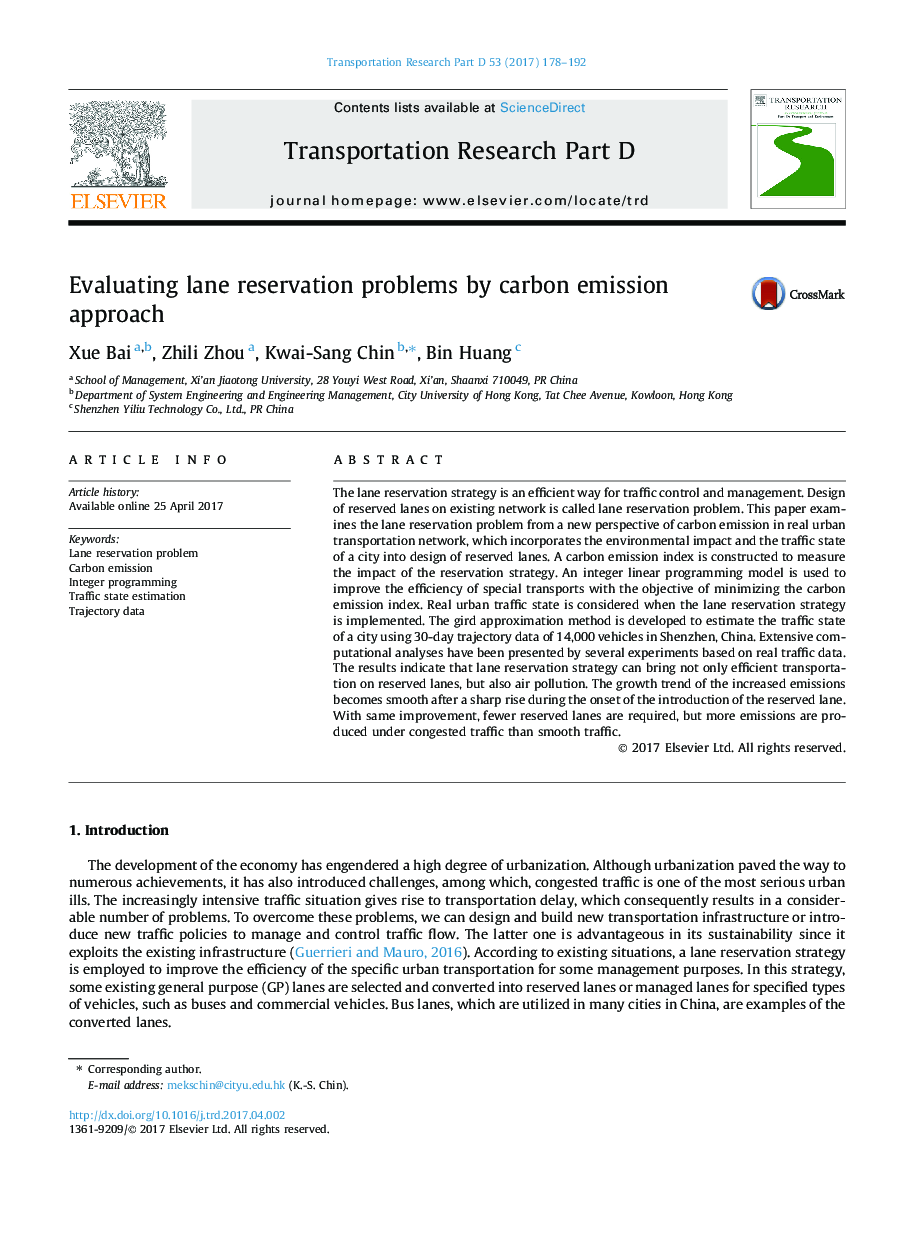| Article ID | Journal | Published Year | Pages | File Type |
|---|---|---|---|---|
| 5119425 | Transportation Research Part D: Transport and Environment | 2017 | 15 Pages |
â¢The environmental impact of the lane reservation strategy is quantified.â¢A mathematical model is used to improve the efficiency of special transports.â¢Real-life trajectory data is used to extract real urban traffic information.â¢The growth trend of the emissions becomes smooth after a sharp increase.â¢The environmental impacts of reserved lanes under different traffic states are compared.
The lane reservation strategy is an efficient way for traffic control and management. Design of reserved lanes on existing network is called lane reservation problem. This paper examines the lane reservation problem from a new perspective of carbon emission in real urban transportation network, which incorporates the environmental impact and the traffic state of a city into design of reserved lanes. A carbon emission index is constructed to measure the impact of the reservation strategy. An integer linear programming model is used to improve the efficiency of special transports with the objective of minimizing the carbon emission index. Real urban traffic state is considered when the lane reservation strategy is implemented. The gird approximation method is developed to estimate the traffic state of a city using 30-day trajectory data of 14,000 vehicles in Shenzhen, China. Extensive computational analyses have been presented by several experiments based on real traffic data. The results indicate that lane reservation strategy can bring not only efficient transportation on reserved lanes, but also air pollution. The growth trend of the increased emissions becomes smooth after a sharp rise during the onset of the introduction of the reserved lane. With same improvement, fewer reserved lanes are required, but more emissions are produced under congested traffic than smooth traffic.
